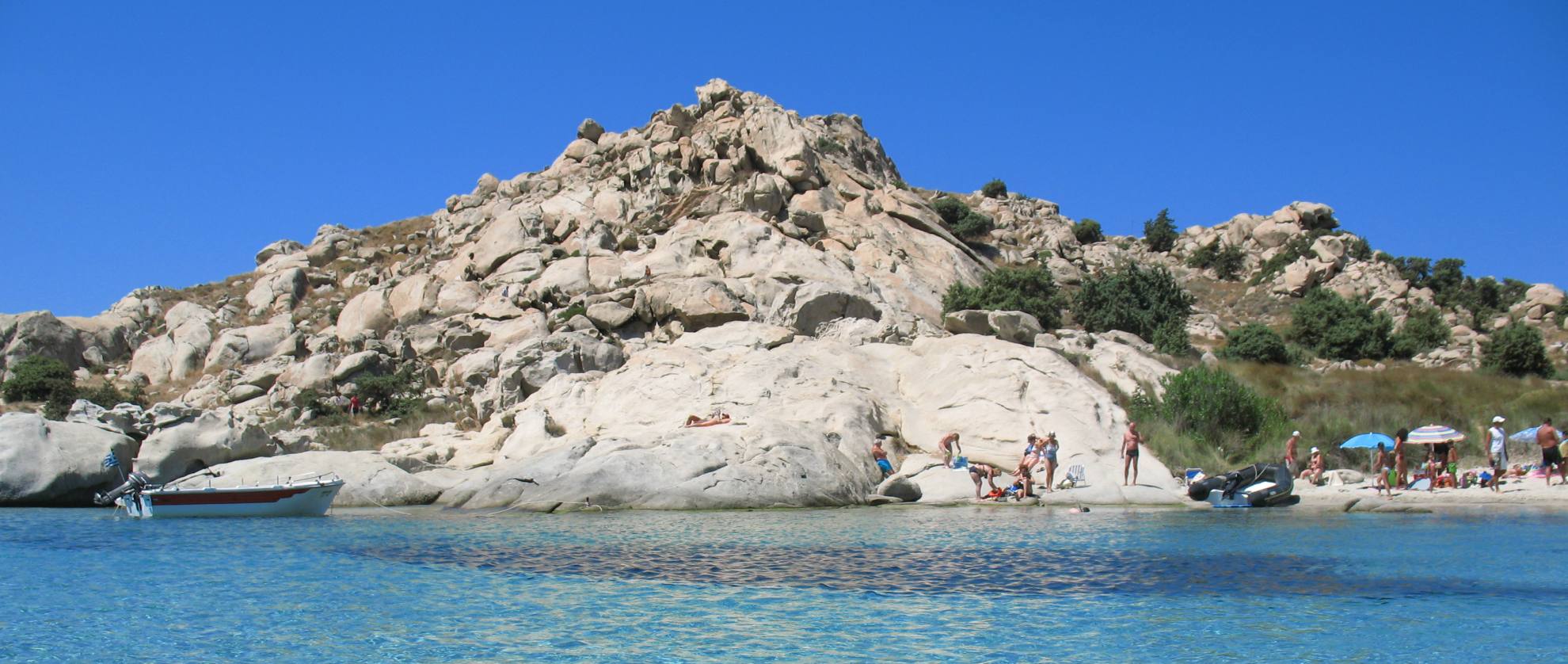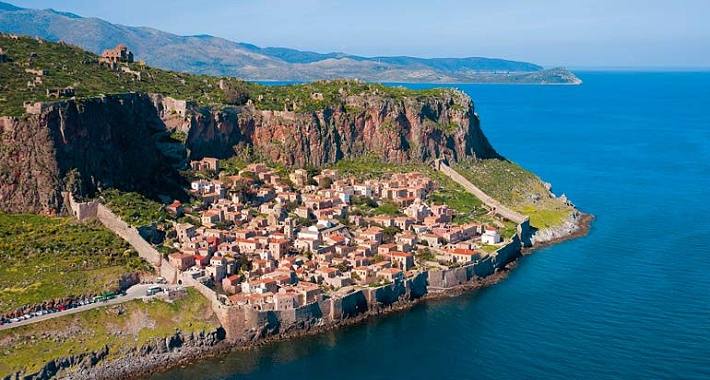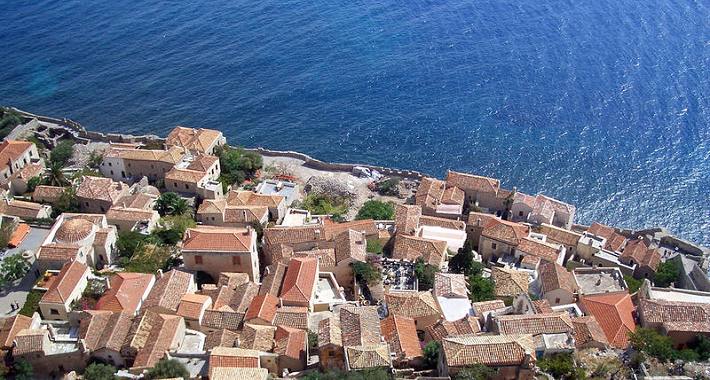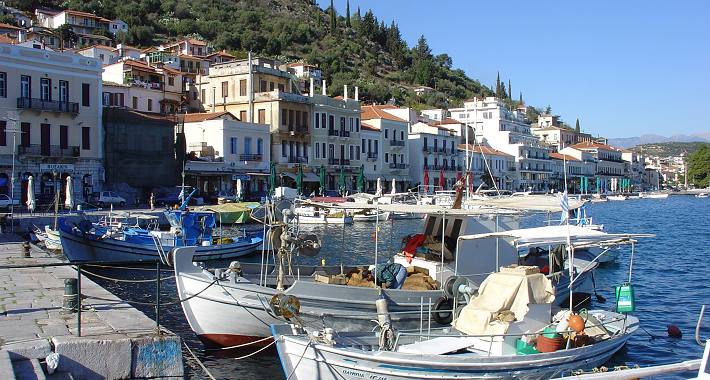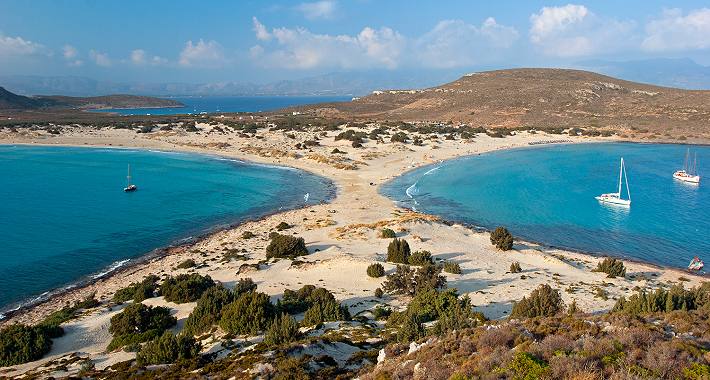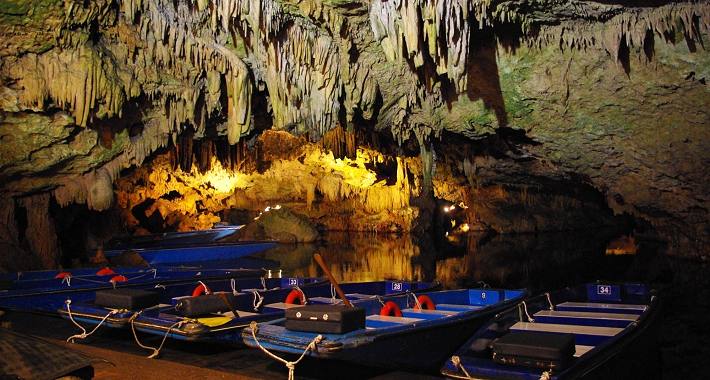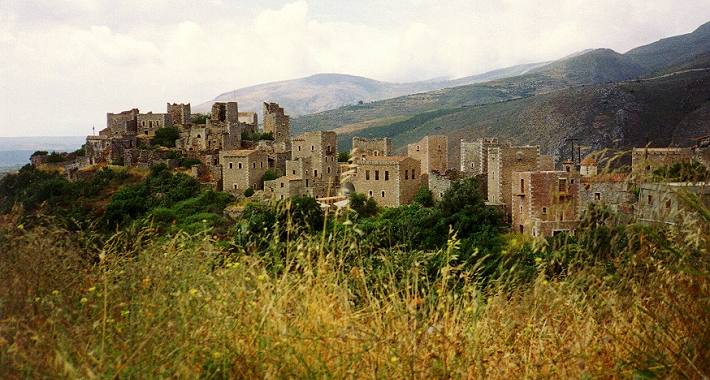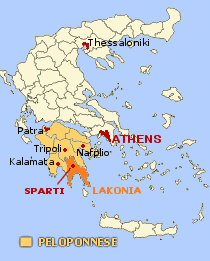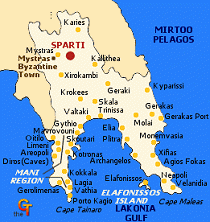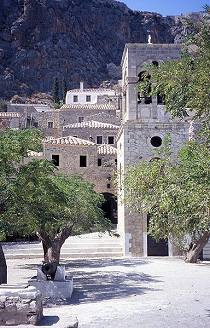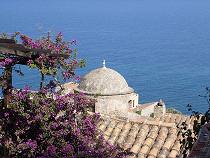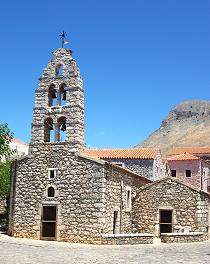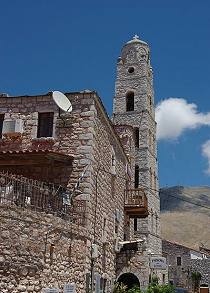Lakonia » Mystras, the Byzantine city-state
More about Lakonia
HotelsLakonia
The past
Things to see and do
Mystras, the Byzantine city-state
Monemvasia
Biotopes - Vatika district
Mani Region
Mani
The Towers of Mani
Areopoli
Diros and the Caves
Gerolimenas
Gythio
Oitilo (Itilo)
Vathia
Places in Lakonia
Archangelos and Plitra
Nea Monemvasia
Neapoli
Neapoli area - Vatika
Elafonissos Island
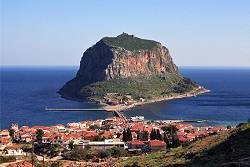
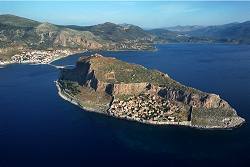
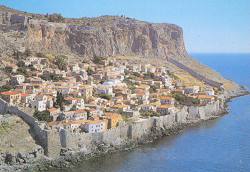
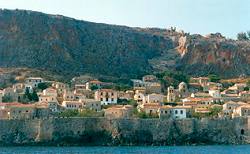
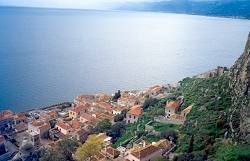
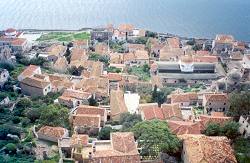
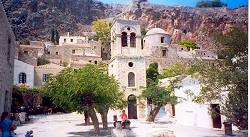
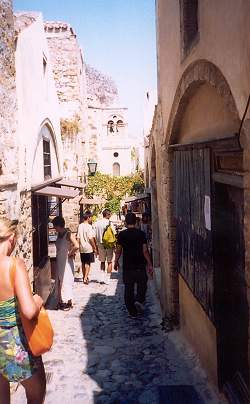
Monemvasia
Unique, defeating the passage of time, a breathtaking
picture at the eastern coast of Laconia, combining the Myrtoon
Sea, the medieval, Byzantine and Venetian fortress-town of
Monemvasia perched on its distinctively shaped rock, attracts
thousands of visitors every year.
Access is by land, by following the Sparta-Molaoi road to the south-east, or by sea, by the ship of the line linking Piraeus with the South Peloponnese, Kythira and Kasteli, or by flying dolphin, or by private yacht, since the harbour is one of the safest. Monemvasia is 95km from Sparta.
Monemvasia occupies a steep, rocky islet connected to the Laconian coast by a bridge. The rock on which it is built, 300m. high, is connected to the coast by means of a low bridge. Nea Monemvasia, the new city across from the fortress-town, is modern and full of vitality year-round, offering all tourist facilities by the seaside.
History
The town owes its name to the narrow strip of land linking
the coast with the rock. "Monemvasia" is derived from the
words moni emvasi, ie., sole approach. The appellation
originates with the Laconians who arrived here in the 6th
century AD, to shelter from the raids on the mainland. In an old
record referring to the "settlement of Monemvasia" we find an
early description of how the Laconians discovered this remote
place by the sea, named it as described above, and settled it.
Since then, and for more than a thousand years,
Monemvasia experienced days of glory and fame, though also
sieges and occupation. The information regarding its first
centuries is scant.
We hear however of its brave resistance to a raid by the Normans in the mid-12th century. A century later, the courage of the defenders and the naturally fortified position of the rock defeated the attempt of William Villehardouin to subdue it by assault, but the town fell in 1249 because of hunger, after a close siege of three years. Ten years later William Villehardouin was made prisoner by Michael Paleologus and bought his freedom by handing to the Byzantines the fortresses of Mistras, Maini and Monemvasia. Thus Monemvasia reverted to Byzantine rule, became an important naval and military base and developed both economically and culturally.
However it also became a target for pirates. The terrible attack of the Catalans in 1292 is legendary. One side-effect was that while repelling the innumerable pirate raids, the inhabitants became quite adept themselves at naval warfare.
In 1419 it fell for the first time, but only for a sholt period, to the Venetians. Once again it revelted to Byzantine rule and when in 1460 Mistras surrendered to the Turks Monemvasia remained the only free Greek city. For a while it came under the protection of the Pope who gave it to the Venetians in 1464.
Since then it became the epicentre of the wars between Venice and Turkey. The Venetians called it the "Neapolis of Malvazia" because of the appellation of the fine, aromatic wine Malvazia that was transpolted to the West via Monemvasia.
In 1540 the Turks captured it after a three-year siege, and named it "Castle of the Violets". The Venetians re-captured it in 1690, but in 1715 they sold it to their adversaries. Later, the town declined after the failed insurrection of 1770. It was liberated by the Greeks on July 23, 1821.
Sightseeing
More than forty churches are strewn among the narrow
streets.
The most important and the largest is the church of Elkomenos Hristos (Christ Elkomenos = Dragged to the Cross), the cathedral of Monemvasia, It was famous for the picture of Christ Elkomenos, which was removed by Isaak Angelos and transported to Constantinople. The temple was founded in the 13th century by the Emperor Andronicos II Paleologus but was given its later aspect by the Venetians in 1691. In the place of the old picture is one with the same subject from 1700, painted in the Ionian Islands. There is however a superb painting of the Crucifixion dating from the 14th century and two marble imperial thrones.
Other important churches, combining Byzantine and Venetian elements, are those of Agios Nikolaos and Panagia Myrtidiotissa (or Panagia Ktitikia). The Church of Panagia Hrisafitissa is the subject of many folk-tales, describing how the picture arrived here from Hrisafa, a village near Sparta. Also worth a visit are the churches of Agia Anna, Agios Dimitrios, Agios Stefanos and Agios Andreas. The large-domed building opposite the Church of the Elkomenos was, according to tradition, the church of Agios Petros, bishop of Monemvasia. During the Turkish occupation it was a mosque and today it houses the local museum.
An uphill walk awaits for those wishing to see the upper town! At the top of the cliff, on the plateau, are the ruins of the fortified town, the walls, guardhouses and towers, large water cistems and the residence of the Venetian Govemor.
At the eastern tip of the rock stands the greatest monument of Monemvasia, the church of Agia Sofia. It is of the octagonal type, like those of Dafni and Osios Loukas. It was built at the end of the 12th century by the Emperor Andronicos, and then followed the fate of the town, becoming a catholic cathedral during Venetian occupation and a mosque during Turkish, when its wall paintings were covered by lime. However, neither the conversions nor time managed to distort its exquisite proportions and its charm, or the magnificence of the interior and the few, but very impressive wall paintings that survive. The double arch at the southern side brings to mind the churches of Mistras, and the view towards the sea can arrest the passage of time.
Magnificent is also the view from the fortress to the lower town.
More about Lakonia
Mani Region » Mani • The Towers of Mani • Areopoli • Diros and the Caves • Gerolimenas • Gythio • Oitilo (Itilo) • Vathia
Places in Lakonia » Archangelos and Plitra • Nea Monemvasia and the surroundings • Neapoli • Neapoli's surrounding area - Vatika • Elafonissos Island.
